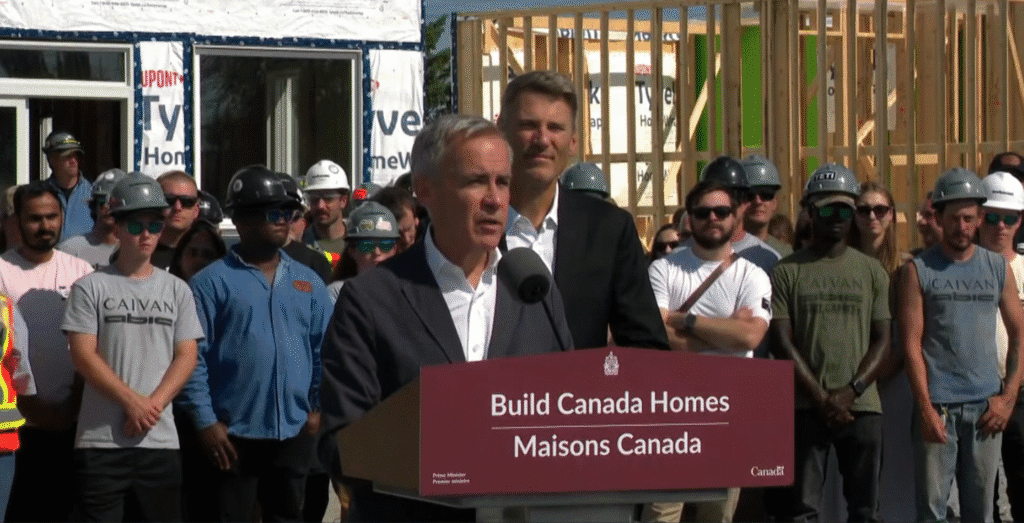
Another government agency. Another big promise. Another $9 billion. But will it actually build homes Canadians can afford?
What Carney Announced
On September 14, Prime Minister Mark Carney announced the launch of Build Canada Homes, a new government agency designed to accelerate affordable housing construction. The agency will receive roughly C$13.0 billion in capitalization and is expected to begin with the rollout of 4,000 factory-built homes on federal land.
The stated goal is simple: speed up housing construction and address Canada’s ongoing affordability crisis.
But after reviewing the details of the announcement, my conclusion is clear: this will not meaningfully change the trajectory of Canada’s housing market.
What the Plan Promises
- A new federally backed agency, Build Canada Homes.
- $9.4 billion in capitalization to support affordable housing construction.
- An initial plan to construct 4,000 modular, factory-built homes on federal lands.
- A commitment to “boost the pace of construction” and support builders.
Why It Falls Short
1. Modular Homes Are Not the Solution
The government is betting on modular construction as if it were a silver bullet. But modular homes are not widely in demand, banks are hesitant to finance them, resale values are weak, and builders already operate efficiently. If modular construction were truly faster, cheaper, or more profitable, the private sector would already be building at scale.
2. Builders Build Homes, Not Government Agencies
Canada already has a strong, capable building industry. The problem is not a lack of agencies; the problem is that the existing industry is blocked by policy, red tape, and costs. Creating another bureaucracy does nothing to solve the core issues.
3. Billions Spent Without Addressing Root Causes
Throwing $9 billion into a new fund avoids the fundamental realities driving the housing crisis:
- Population growth vs. supply: We are adding 400,000 to more than 1,000,000 people per year while building just over 200,000 homes annually.
- Excessive taxation: Government adds 40–60% to the cost of a new home through taxes and fees.
- Municipal barriers: Local councils regularly block or delay projects with outdated zoning, adding years and costs that discourage investment.
- Inflationary spending: Tens of billions in new government debt every year drives up wages and construction costs.
- Artificially low interest rates: Propping up the economy with near-zero rates has fueled demand for housing and inflated prices.
4. Simple Policy Levers Already Work
We’ve already seen the evidence:
- Reduce immigration or student visa numbers and demand falls.
- Raise interest rates and prices come down.
These levers are straightforward. Yet instead of addressing them, the federal government continues to announce expensive programs that avoid the root causes.
The Bottom Line
Canada’s housing problem is not complicated. The solutions are not mysterious. But political announcements are being prioritized over meaningful policy change.
Save the $13 billion. Remove the barriers. Empower the industry we already have. If the government took these actions, the market would begin correcting itself.
The unfortunate reality is that after years of mismanagement, the damage is now so deep it could take a decade or more to unwind. But creating problems and then spending billions on policies that make them worse is not the answer




